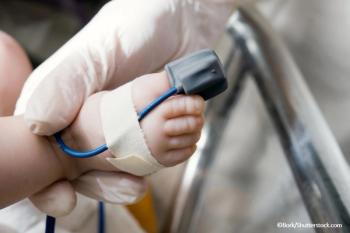
Herpes Labialis
A 34-year-old woman presented with a3-day history of painful blisters of theupper lip and nose. Five days earlier,a rapid antigen test had confirmedstreptococcal pharyngitis; amoxicillinwas prescribed. The patient had nohistory of herpes and was immunocompetent.She had several youngchildren and did not work outsidethe home.
A 34-year-old woman presented with a3-day history of painful blisters of theupper lip and nose. Five days earlier,a rapid antigen test had confirmedstreptococcal pharyngitis; amoxicillinwas prescribed. The patient had nohistory of herpes and was immunocompetent.She had several youngchildren and did not work outsidethe home.Intense erythema of the lips andnose with blisters and some crustingwas seen. There was no ocular orintraoral involvement to suggestStevens-Johnson syndrome. Tendernessof the anterior cervical lymphnodes may have been caused by therecent streptococcal infection, a primaryherpesvirus infection, and/orsecondary bacterial infection ofher herpetic lesions. A diagnosisof herpes labialis, presumably type 1infection, with secondary bacterialinfection was made. A recent streptococcalinfection is often a trigger foran outbreak of herpes.Treatment consisted of a 5-day regimen that included famciclovir, 500 mg tid; fluocinonide, 0.05% gel, applied q8h; and cephalexin, 250 mg qid. The symptoms resolved promptly and completely.In one study, a 5-day course of oral famciclovir (500 mg tid), started 48 hours after herpes labialis was induced, reduced healing time from a mean of 6 to 4 days (P 1 Combination therapy with topical fluocinonide, applied q8h for 5 days, and famciclovir reduced lesion size and ameliorated pain to a greater degree than famciclovir alone.2 Topical penciclovir or acyclovir can be used instead of oral famciclovir in patients with herpes labialis.(Case and photograph courtesy of Dr Donald J. Kovacs.)
Newsletter
Enhance your clinical practice with the Patient Care newsletter, offering the latest evidence-based guidelines, diagnostic insights, and treatment strategies for primary care physicians.

















































































































































































































































































